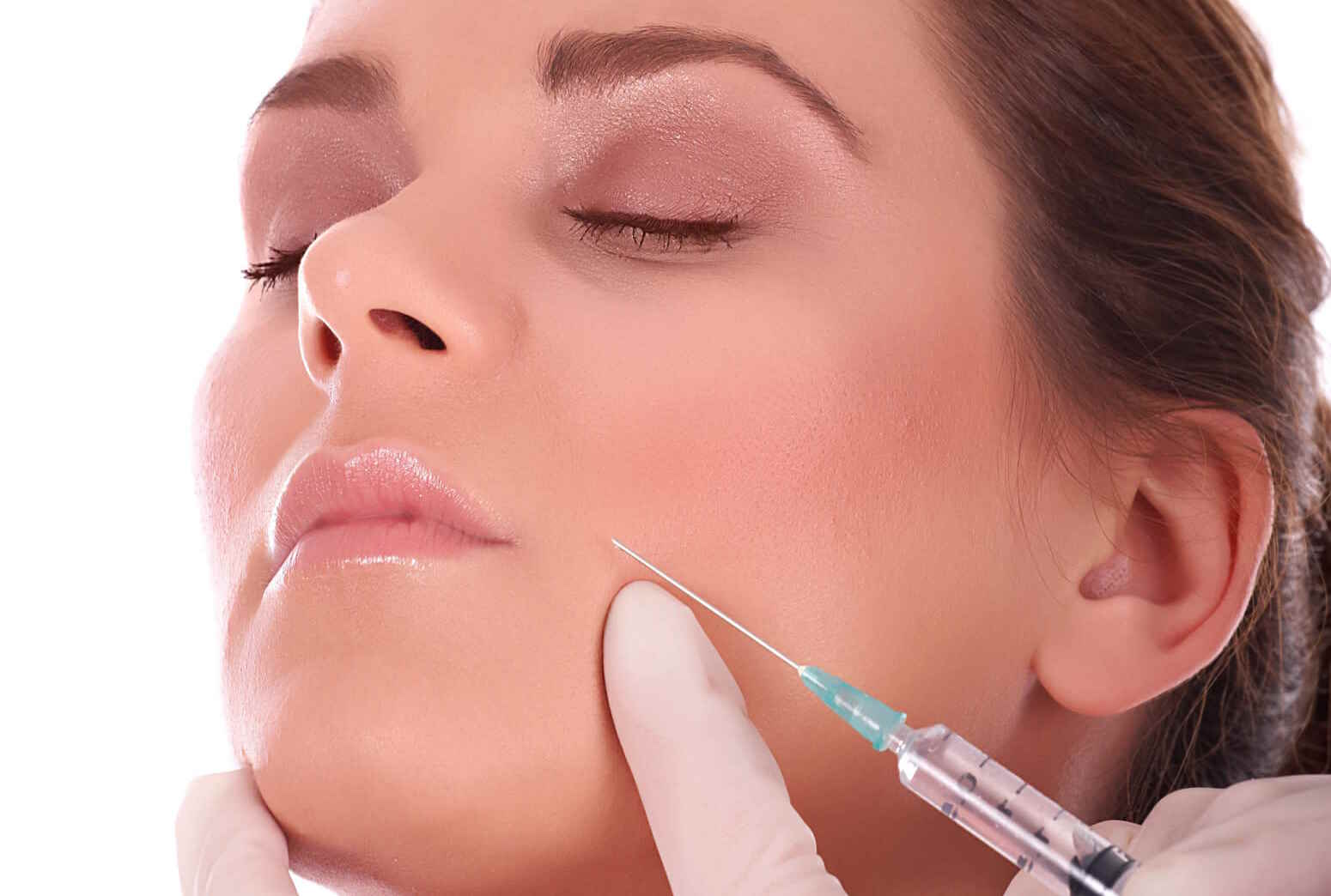Dental bridges in West Palm Beach can be a simple solution to tooth loss. Using the surrounding teeth as support, we can place a dental restoration requiring no surgery, extensive waiting times, and fewer aftercare instructions. For that reason, they’ve become a go-to solution for many patients. However, before considering any treatment, understanding it in detail is crucial to determine if it is right for you. Here are some frequently asked questions about dental bridges that can help you learn more. Frequently Asked Questions About Dental Bridges If you’re considering dental restoration, bridges stand out as an accessible and quick solution. But to understand this treatment, it can be crucial to ask yourself these questions: What Are Dental Bridges? A dental bridge is a long-term device that uses a pontic, or artificial tooth, to fill in the space left by a missing tooth or teeth. The abutment teeth (the natural teeth on either side of the missing space) usually have crowns placed on top to create the bridge. The pontic covers the lost tooth, which is cemented into place and bonded to the abutments. Bridges can be fixed or removed. They work well for people who have lost teeth but still have healthy neighboring teeth to support them. What Types of Dental Bridges Are There? There are four main types of dental bridges. What is the Process for Getting Dental Bridges? One of the benefits of bridges is that they’re simpler and easier to get than other restorative options, like implants. The key steps of the bridge placement process include: Does Insurance Cover Dental Bridges? While it depends, most dental insurance plans cover bridges under major restorative services. However, they may not cover the entirety of the treatment. Coverage usually ranges from 40% to 80% of the cost, depending on the plan, whether you’ve met your deductible, and the remaining annual maximum benefits. Additionally, you may still have out-of-pocket costs if you opt for premium materials like all-porcelain or zirconia. How Long Do Dental Bridges Last? The lifespan of a dental bridge depends on several factors. The most crucial thing to keep in mind is that a dental bridge is not infallible. Similar to your natural teeth, a dental bridge’s lifespan can be significantly shortened if you neglect it or engage in behaviors like bruxism, or teeth grinding. While many dentists predict that a bridge will last five to seven years on average, it may last longer or even a lifetime with the right maintenance. How Can I Prevent My Dental Bridge From Getting Damaged? Proper care habits can considerably improve the lifespan of your dental bridge. Like normal teeth, your bridge is susceptible to cavities if you don’t brush and floss properly. The bridge’s artificial teeth may not be impacted by decay, but the abutment teeth can. Severe decay could affect the bridge’s attachment to these teeth, ultimately leading to failure. Furthermore, blunt force can erode or shatter a bridge. Chewing on hard materials, such as ice, can put pressure on the dental bridge’s attachment to the abutment teeth. Additionally, grinding your teeth may put additional strain on the bridge. The best ways to keep your bridge safe are to avoid chewing on hard foods and objects, be aware of the symptoms of grinding (such as migraines and jaw pain), and visit your dentist regularly. When Do You Need to Replace a Dental Bridge? If you have a dental bridge and notice it feels loose or different, don’t wait until your next dental appointment. Call us as soon as you notice anything amiss. If your bridge is broken or damaged, we will do everything possible to fix or replace it as needed. Get Dental Bridges in West Palm Beach with Confidence Tooth loss is more than an aesthetic concern: it can be the triggering factor that puts your entire smile at risk. When a tooth is lost, the surrounding ones shift toward the available space, causing misalignment and bite issues. Moreover, missing teeth can make it harder to eat and speak and can even affect your confidence in your grin over time. The team at CJ Dental is here to help you prevent these concerns. Together, we’ll explore all available options to restore your smile to optimal condition, so reach out!
Are You a Candidate for Dental Botox®? All You Need to Know
Temporomandibular joint dysfunctions are intricate and complex disorders to treat. Due to the complexity of the jawbone joint and the wide variety of factors that can cause TMD, doctors often struggle to diagnose and treat this condition properly. This often leaves patients to suffer for longer. Fortunately, for these individuals, dental Botox® may be the unsung hero. Besides helping people keep their youthful appearance longer, Botox® relaxes the jaw muscles, allowing patients with TMD to reduce discomfort and regain the ability to open their mouth fully, eat, and speak easily. However, not everyone is a candidate for this treatment, and here’s why. What’s Temporomandibular Joint Dysfunction? Temporomandibular joint dysfunction, or TMD, is a disorder that affects the jaw joint and the muscles that control it. This joint at the base of the skull is a very complex part of our body because it permits side-to-side and up-and-down movement. For this reason, diagnosing and treating TMD can be difficult. TMJ disorders can cause varying amounts of discomfort. Persistent jaw pain and limited jaw movement are typical symptoms. The discomfort is not always consistent: most cases of TMJ disorders resolve themselves within a short period, usually within a couple of months. However, they tend to reappear over time. Sadly, TMD is a highly common condition. Approximately 12 percent of Americans suffer from TMJ disorders at some point in their lives. With nine women for every one man experiencing excruciating pain and limited jaw movement, women are impacted more frequently than men. What Benefits Does Botox® Have for TMD? Overexertion and tension in your TMJ can result in headaches, jaw pain, and other undesirable symptoms. Numerous treatment options try to ease patients’ discomfort by encouraging relaxation or promoting orthodontic therapies to realign the bite and improve the patient’s resting position. But these approaches are not always effective. However, TMD symptoms can still be excruciating and seriously incapacitating for some people. Imagine being unable to speak, eat, or even smile without experiencing pain whenever you opened your mouth. In these severe situations, Botox® is frequently advised. Unknown to some, Botox® is actually a toxin that prevents a muscle from moving for a limited time. When injected into the jawbone, it can help paralyze some muscles, relax the area, and reduce pain and other symptoms. According to a 2017 study, Botox injections may actually lessen TMD symptoms like: Who’s a Good Candidate for Botox® for TMD? More and more patients with TMJ disorders are turning to Botox® as a solution for their pain. This toxin has proven effective when other traditional treatments failed to relieve tension. However, Botox® isn’t considered a first-line treatment: it’s a promising second-line option, especially when symptoms are muscle-driven rather than joint-based. Ideal candidates are people who: Who Should Avoid Botox® for TMD? While Botox® can offer relief to many people struggling with TMD, certain patients are advised to avoid it. This is the case for: Is Botox® for TMD Safe? Yes, Botox® is a safe and reliable method for reducing TMD symptoms when applied by a qualified professional. According to research on animals, Botox® injections may weaken bones, but a 2020 study on humans disputes this. People who are thinking about getting Botox® for TMJ dysfunction should talk to a healthcare provider about the advantages and disadvantages in detail. Additionally, it is fundamental to reach out to a qualified professional. Botox® for TMD requires in-depth anatomical knowledge, and poor technique can lead to complications. Injecting the wrong muscles can worsen pain, cause jaw weakness or asymmetry, and even lead to difficulty chewing or speaking. Poor technique or non-sterile tools can lead to infections, inflammation, or hematoma formation. Additionally, if Botox® affects nearby muscles like the sternocleidomastoid or pharyngeal muscles, it can impair swallowing or even airway function. To prevent all of this, make sure to seek a trained professional that has former success stories to display. How Long Does Botox® for TMD Last? Sadly, Botox® is not a cure for TMJ issues. It is a temporary treatment that wears off over time. A person must repeat the treatment every few months to maintain the effects. The effects of Botox® for treating temporomandibular disorders (TMD) typically last 3 to 6 months. Relief may begin within a few days to two weeks after injection, and effectiveness peaks around 4 to 6 weeks post-injection. By week 12, though, the effects will gradually taper off. The total durability of Botox® depends on various factors, such as the severity of TMD and muscle activity. Patients who use their jaw muscles more intensely, due to bruxism, for example, tend to metabolize the Botox® faster. Explore the Benefits of Dental Botox® for You TMJ disorders are more than an oral issue: they can become a severely disabling condition that doesn’t let you conduct your daily activities with ease. Certain traditional methods like doing jaw exercises or using a mouthguard at night can help ease some symptoms. However, they may not be the solution for more severe cases. Luckily, Botox® offers a reliable, proven method patients can rely on to reduce pain. If you suffer from TMD and want to learn more about this solution, contact CJ Dental today!
Botox® for TMJ Disorder: Treatment, Aftercare, and All You Need to Know
The temporomandibular joint (TMJ) is one of our bodies’ most complex and important joints. It allows us to eat, speak, and smile with ease. For that reason, issues with it can be painful, frustrating, and damaging to our quality of life. While diagnosing and treating TMD is hard, one method that has proven to be effective is Botox® for TMJ in West Palm Beach. Botox® can help relieve the symptoms of temporomandibular joint (TMJ) dysfunction by relaxing the jaw, reducing pain, and enabling you to regain full control of your mouth. Here, we’ll explain in detail the benefits of Botox® for TMD. What Is TMJ Disorder? TMJ disorders are complicated conditions that impact the muscles that control the jaw joint. The temporomandibular joint, or TMJ, is located at the base of the skull and connects the temporal bone to the mandible or lower jaw. The TMJ allows for movement up and down and from side to side, making it possible for us to chew and talk. However, this is also why it’s one of the most complex joints in the body, making severe TMJ disorders difficult to diagnose and treat effectively. Sadly, disorders in this joint are common. In the United States, TMJ disorders affect 12% of the population at any given time. Women are more likely than men to be affected, with nine women out of every one man reporting severe pain and limited jaw movement. Luckily, there are several treatments available that help treat TMJ disorders and reduce their symptoms, and Botox® is one of them. What Causes TMJ Disorder? To understand the benefits of this treatment for patients with TMD, we first need to explain what causes pain in the temporomandibular joint. TMJ disorders are mainly associated with stress and tension in the jaw and overall body. Still, several factors can lead to pain in the jaw joint, such as: It has been mentioned that women are more likely than men to suffer from TMJ disorders. Researchers suspect there could be a hormonal cause of it. How Botox® Helps Treat Temporomandibular Joint (TMJ) Disorders Although botulinum toxin, or “Botox®,” is best known for its cosmetic uses, it also has medicinal uses, such as relieving muscle pain and tension. Botox® treats TMJ disorders by calming the tense jaw muscles that cause bruxism or clenching and grinding, which frequently makes TMJ pain worse. Injecting Botox® directly into the temporalis and masseter muscles reduces excessive contractions, which lessens the strain on the jaw joint. While traditional therapies like mouthguards, physical therapy, and medication can help, Botox® has become a viable and minimally invasive way to manage TMJ disorders effectively. According to a 2012 study, Botox® could dramatically reduce pain and increase mouth movements three months after treatment. This study had just 26 participants; however, additional research revealed that up to 90% of participants who did not respond to conservative treatments saw an improvement in their symptoms. Benefits of Botox® for TMJ Dysfunction A doctor can help a patient relax and lessen symptoms like jaw tensing and grinding by injecting Botox into different jaw muscles, paralyzing the muscles. This may lead to an improvement in the patient’s TMJ-related symptoms, resulting in several benefits, such as: Reduced Discomfort One of the main benefits of Botox® for TMJ disorders is the substantial pain relief it offers. After a few days of treatment, many patients report less neck pain, jaw soreness, and headaches. The effects usually last three to six months and enable people to continue using their jaws normally without experiencing ongoing discomfort. Non-Invasive Procedure Another advantage is that Botox is a quick, non-surgical procedure that typically takes less than 30 minutes and requires little recovery time. In contrast to conventional treatments that might involve long-term therapy or potentially harmful medication, Botox® offers targeted relief without causing systemic problems. Prevents Long-Term Damage Excessive grinding can harm teeth and jaw structures over time—but Botox® can help avoid this. Prolonged tension and clenching can result in tooth wear, fractures, and misalignment. By relaxing your bite, Botox® protects teeth and promotes general oral health by lowering muscle hyperactivity. Downsides of Botox® for TMJ Dysfunction It’s important to note that Botox® is not a cure for TMJ issues—it’s a temporary treatment that wears off over time. The patient must repeat the treatment every few months to keep the effects going. Additionally, you might experience immediate pain from the injection, like a prick or bug bite. To reduce pain, we recommend using a cold pack or numbing cream. What Happens During the Procedure? Botox® is a non-surgical treatment for TMJ disorder. It can be easily done at our dental office, and treatment sessions usually last between 10 and 30 minutes. Over several months, you should anticipate receiving at least three injection sessions. We will administer Botox® injections to your jaw, temples, and forehead. Depending on your symptoms, they might also be injected in other places. The number of Botox injections you require depends on your symptoms and the state of your TMJ. Relief typically takes several days, though some improvement may be noticeable within a day or two of treatment. Aftercare for Botox® for TMJ Disorders You can resume your regular activities as soon as you leave our office, but you should limit strenuous physical activity. Avoid heavy exercise, bending over, or activities that increase blood flow to the face, which may reduce the effectiveness of Botox®. Refrain from massaging or rubbing the injection site, as this could spread the toxin to other muscles. Skip alcohol and blood thinners, like aspirin or ibuprofen, as they can increase bruising at the injection sites. Additionally, drink plenty of water to support muscle function and healing. Enjoy the Benefits of Botox® for TMJ in West Palm Beach Botox® is a cutting-edge treatment that provides relief and an enhanced quality of life for people with TMJ pain. While its results are not permanent, Botox® is an efficient, non-invasive solution treatment that relaxes your temporomandibular joint, allowing you to eat and speak







